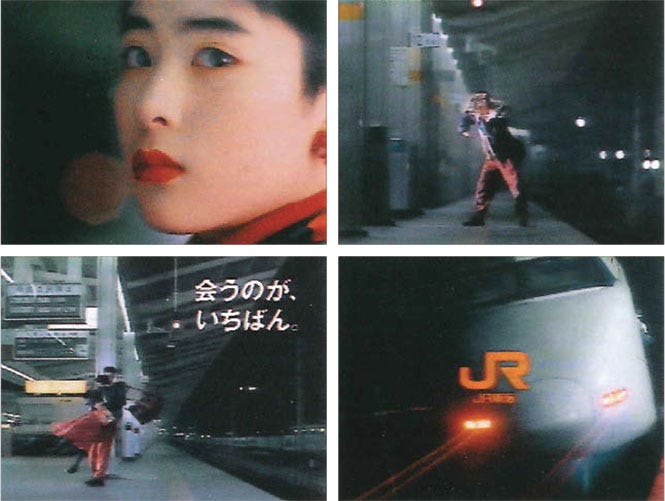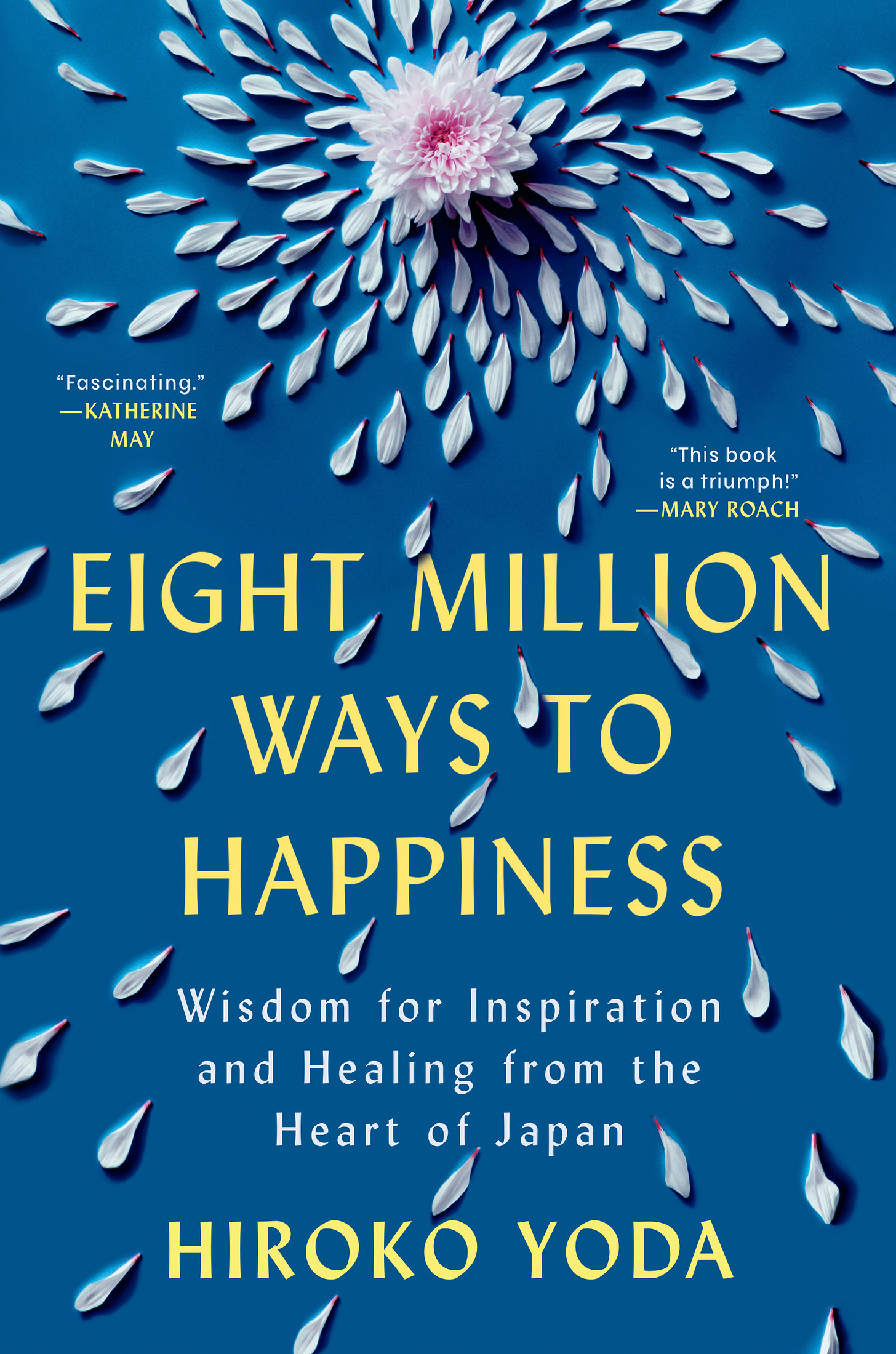Endless Christmas Eve
The surprising reason Japan celebrates Christmas Eve instead of Christmas Day
My husband told me about Whamageddon, a game that Americans play during the Christmas season. It’s a simple game with one rule: if you hear Wham’s Last Christmas, you lose. I get it, because I heard it frequently as a high-school exchange student in Indiana. I also get it because I spend most Christmases in the United States with extended family, so I know how inescapable the tune has become in the years since its 1984 release.
But did you know there’s a similarly inescapable holiday song in Japan? It’s even bigger than Last Christmas in my country. It’s called Christmas Eve. It was composed and sung by the king of the City Pop scene, Tatsuro Yamashita, who happens to be married to the scene’s queen, Mariya Takeuchi.
It’s hard for me to exaggerate just how big Christmas Eve was, and is, in Japan. Yamashita wrote the song for Takeuchi in 1981, but ended up recording and releasing it himself a few years later. It proved popular enough, but its incorporation into a 1988 promotional campaign gave it a second life. In 2016, the song earned a Guiness Record for spending thirty years on the pop charts, the longest of any single ever recorded in Japan. Over the decades it has entrenched itself as THE Christmas song in my country, and even affected the way the country celebrates the holiday.
When you think about it, this is a little odd. Less than 1% of Japanese identify as Christian, and nobody gets the day off work for Christmas here. Yet Japanese have long embraced the iconography of the imported holiday: Santa and trees, lights and tinsel, Christmas cakes, and, of course, the gift-giving. Just like the U.S, stores and restaurants begin putting out their Christmas decorations in late November, hanging colorful lights on trees and buildings, turning parts of the city into sparkling illuminated wonderlands.
There’s nothing religious about these displays – you won’t see the nativity scenes or stars of Bethlehem you might in the States. It’s a big marketing scheme to sell goods and services – but it’s pretty, so everyone rolls with it.
There are so many Christmas displays in modern Japan, in fact, that it might seem like my country has always embraced the holiday. But in fact, it’s a relatively recent development. When I was a little girl, back in the Seventies, there wasn’t anything like them at all. Everyone knew about Christmas, but it was still seen as a foreign custom, so the celebrations were a lot quieter.
My parents, for example, would sneak into our rooms as we slept, leaving little presents behind. When we awakened the next morning and rushed delightedly to show our them, they feigned surprise and said they were from Santa Claus. Our Santa was particularly special: he’d usually leave a book for each of us on Christmas Eve, and then a stuffed animal or board game on Christmas night, which we’d all play together the next day.
For years, my sister and I wondered how Santa came into our house. All of the picture-books we’d seen explained that he rode a sleigh pulled through the sky by red-nosed reindeer, dropping into good children’s homes via their chimneys. But, like most homes in Japan, ours didn’t have a fireplace. Neither did any of the other houses in our neighborhood. How did he do it? Before long, we realized Santa was actually my parents. The childhood Christmas tradition came to an end, and Christmas day became just another day.
But everything changed in 1988, at the height of the Japanese “bubble economy.” Japanese advertising companies were at peak influence, producing commercials that often felt like art. Starting that year, and continuing to 1992, the Central Japan Railway Company, better known as JR, released a series of glamorously produced television commercials under the title “X’mas Express.” The sixty-second spots starred fashionable young women excitedly preparing for their boyfriends’ return by bullet train – and all of them were set to Yamashita’s Christmas Eve.
These were less ads than minute-long dramas, each with its own little love story. They absolutely entranced young people, to the point I still remember one of the catch phrases: jinguru beru wo narasuno wa kaettekuru anata desu – “It’s you who rings the jingle bells when you return.” As the ads grew more elaborate in subsequent years, bullet train platforms filled with young couples on Christmas Eve, attempting to re-create the scenes for real. A great many seem to have purchased Yamashita’s album to set the mood, for it broke a million copies by 1991. (The number is almost double that today.)
As the combo of JR and Yamashita’s song burned the concept of a romantic Christmas Eve into the minds of a generation of young Japanese, other companies quickly began following suit. All sorts of stores, hotels, and services began using the idea to hook their own customers. And the focus of the holiday festivities began shifting from Christmas Day to Christmas Eve.
Today, many establishments actually take down their decorations on December 25th. The “tradition” of bringing Kentucky Fried Chicken home on Christmas Eve is another example of the shift. The company originally promoted the practice as a Christmas Day thing in the 1970s, but that shifted to Christmas Eve in the Nineties, right along with the rise of Yamashita’s song.
So while every year is Last Christmas in America, Japan goes through an endless Christmas Eve. The trio of a catchy pop song, an advertising industry at peak power, and the national railways sold Japan a new fantasy of a romantic Christmas Eve, shifting the timing of the entire holiday in Japan.
Christmas may not be a religious tradition here, but it’s still special because it’s a prelude to the much bigger national tradition of New Year’s Eve and New Year’s Day. In essence, it gives us a moment to catch our collective breath and look back before the flurry of New Year’s travel and festivities start. I suspect that’s the real reason why Christmas remains so popular in Japan. And now we’ve reached the end of 2024. I hope you have a great holiday season!
I wrote a book about my experiences and adventures exploring Japan’s spirituality. It’s called Eight Million Ways to Happiness, and is due out in December of 2025. You can pre-order it here!








Great article! I also like the song Midnight Flight by Shogo Hamada though it seems to be about a sadder Christmas Eve!
We’ve just come back from another holiday in Japan and absolutely loved the stunning Christmas decorations all around Tokyo (and elsewhere). The link to the JR ads is great - we now cannot get the Christmas Eve song out of our heads. We hope you have a wonderful Christmas Eve and thank you so much for this lovely post.